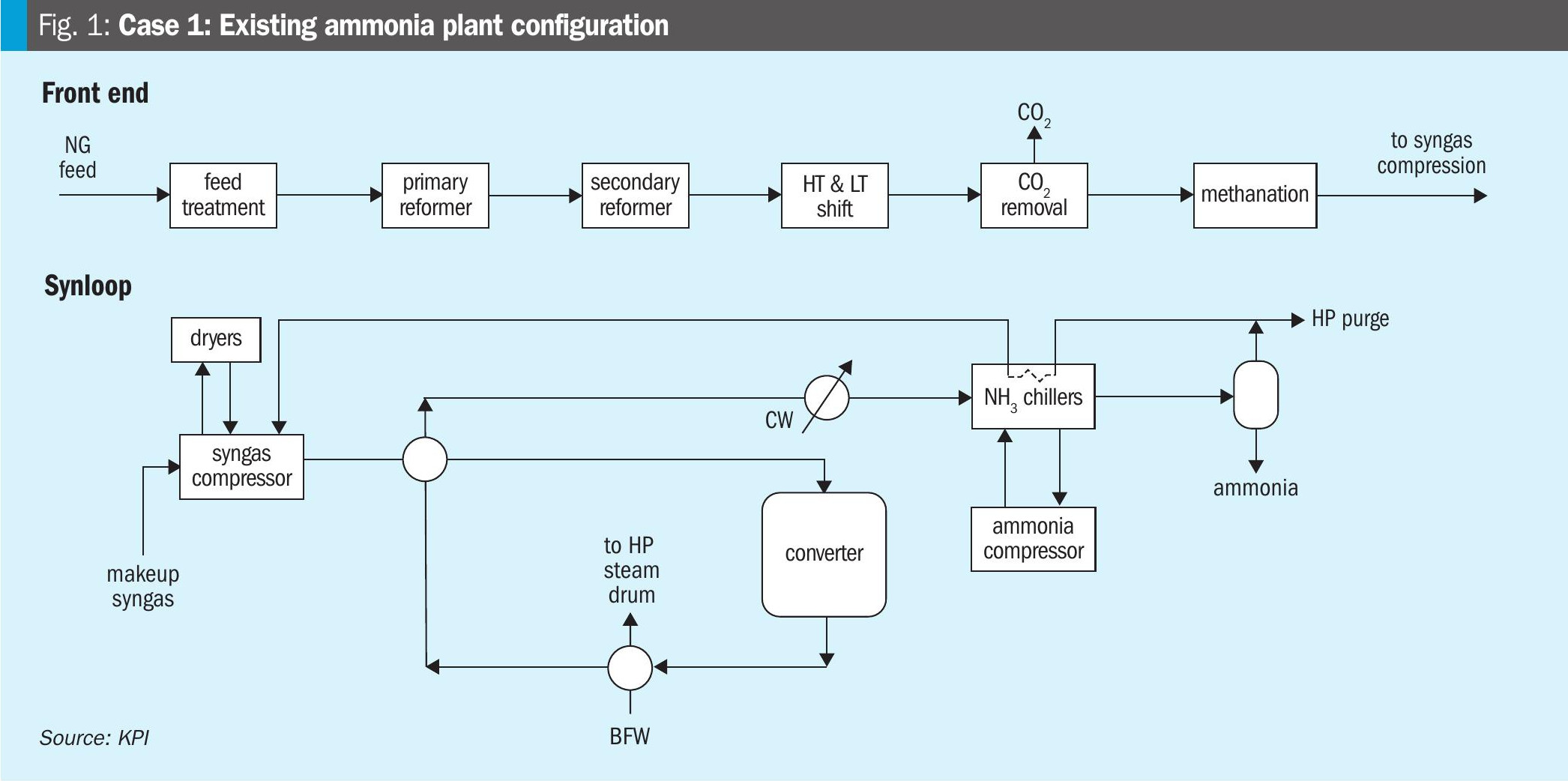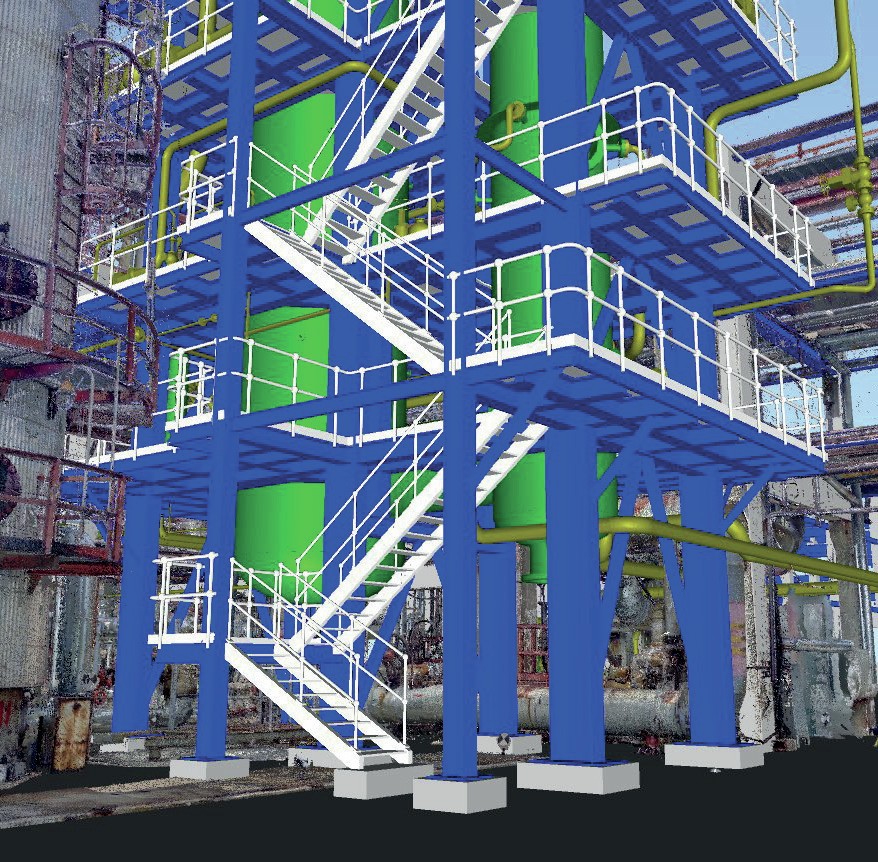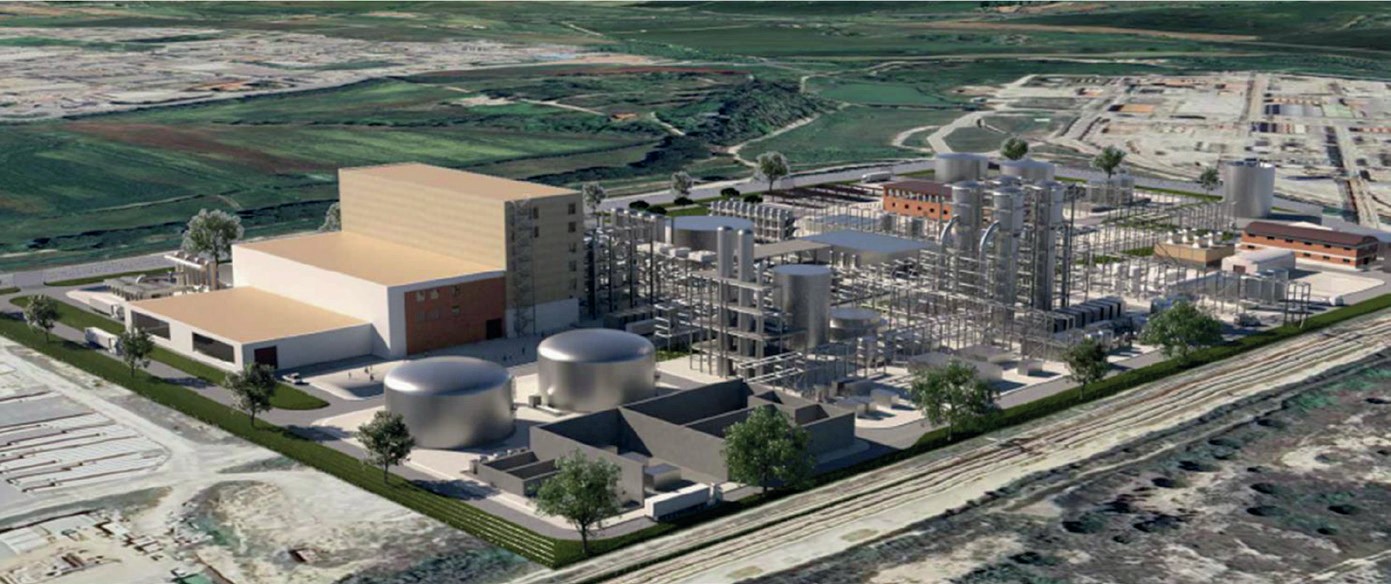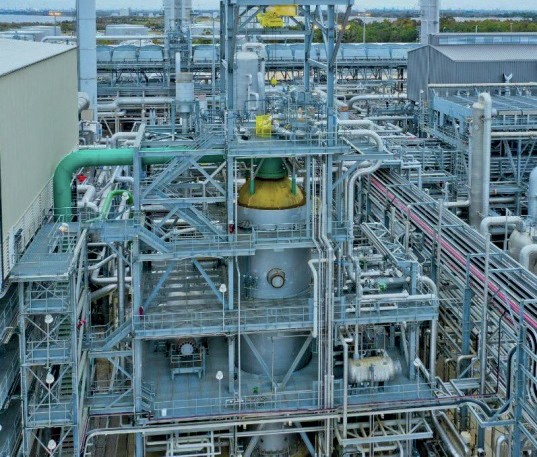Nitrogen+Syngas 376 Mar-Apr 2022

31 March 2022
Emissions trading after COP-26
EMISSIONS
Emissions trading after COP-26
The COP-26 summit in Glasgow last year signed into force new rules on carbon emissions trading which may gradually start to see carbon pricing spread worldwide, with knock-on effects on emissions intensive industries like ammonia and methanol.

Controlling emissions of carbon dioxide and equivalent gases in order to mitigate the worst effects of man-made climate change has become one of the defining issues of the first half of the 21st century. However, actually achieving change on the scale required is a long and difficult process. There is general agreement that change on a planetwide scale will require the cooperation of governments around the world, but how to produce and more importantly enforce that cooperation is a vexed issue.
The first major step in organising international cooperation was the United Nations Framework Convention on Climate Change (UNFCCC), which was signed in 1994 by 154 countries – this has now expanded to 165, as well as 32 other ‘parties’, mainly groupings of other countries such as OPEC and the European Union. The UNFCCC established a series of principles for tackling climate change, as well as mandating a series of regular summits, called the Conference of the Parties (COP) to discuss and ratify agreements.
The first significant fruit of this was the 1997 Kyoto Protocol, which finally achieved the number of signatories for ratification in 2005. This set binding targets on emissions reduction, mainly for developed countries, and created a set of new legal instruments for emissions reductions and removals to be tracked and traded via so-called ‘flexibility mechanisms’. The guiding principle was to set a price for carbon emissions which could then be traded via international emissions trading (IET), as well as encouraging projects which could be ‘offset’ against carbon emissions. These had two forms; Joint Implementation (JI), projects which operated between developed (‘Annex 1’) countries, and Clean Development Mechanism (CDM), projects which were based in developing countries, but which could be used to meet developed country climate targets. The nitric acid industry in particular has been the beneficiary of a number of JI and CDM projects, as relatively inexpensive modifications can significantly reduce the emission of nitrous oxide (N2 O), which has a global warming potential 300 times that of the equivalent weight of CO2 .
However, outside of this area, there were concerns with the mechanisms for ensuring that projects were actually achieving any meaningful reductions in greenhouse gas emissions, leading to accusations of ‘greenwashing’. A 2017 EU Commission study found that 85% of projects funded by the CDM had not in fact reduced carbon equivalent emissions.
Emissions trading
The flexibility mechanisms led to the emergence of emissions trading schemes such as the European Union Emission Trading System (ETS), and similar systems for California, China and the UK, as well as voluntary markets such as the Carbon Offsetting and Reduction Scheme for International Aviation (CORSIA). In theory, by controlling the number of credits and progressively reducing them, it would give a monetary value to industries which emit large amounts of CO2 or equivalent and give a financial incentive to developing and deploying abatement technologies.
In practice, however, the EU ETS suffered initially from over-caution on the part of European governments as to the impact on industry, and too many credits being made available. This meant that up until the mid-2010s the price of a European carbon credit was only e3-5/tonne CO2 e, offering little incentive to reduce emissions. Because the scheme only applied within the EU, it also encouraged more polluting industries to move to jurisdictions with less stringent regulation; so-called ‘carbon leakage’.
Attempts to fix issues with emissions trading systems were incorporated into the 21st meeting of the Conference of Parties (COP-21) in Paris in 2015, via Article 6.
However, binding rules to actually put these into operation were not agreed at COP21, and indeed languished for several more years of argument before a breakthrough was finally achieved towards the end of the most recent Conference of the Parties, COP26 in Glasgow in November 2021. COP-26 has therefore set a new framework for carbon trading which is likely to significantly impact industries such as fertilizer production over the coming years.
The new rules – ITMOs
Article 6.2 covers voluntary cooperation and allows a country that achieves better than its climate target to transfer carbon credits as Internationally Transferred Migrations Outcomes (ITMOs) to another country to assist in meeting the other country’s targets. The new rules clarify that countries can make their own bilateral and multilateral arrangements to trade carbon credits, but it also tightens up the wording to avoid the kind of double counting that had become a problem with the old JI/CDM system. It also obliges countries to denominate ITMOs in either tonnes CO2 e, or another non-greenhouse gas metric (such as renewable energy targets). Through this accounting framework, ITMOs might function as a kind of standard international carbon credit, representing either one tonne of CO2 e, or another appropriate metric.
The new rules will also require a “transaction fee” whenever carbon credits are purchased, meaning that buyers will have to pay a fee, as well as giving 5% of credits purchased to a fund that helps poor countries adapt to climate change.
The sustainable development mechanism
Article 6.4 covers the so-called sustainable development mechanism (SDM). This is a centralised mechanism, governed by the United Nations and overseen by a new Supervisory Body which replaces the old JI/CDM offset mechanisms, and allows private companies or countries to trade emissions reductions, generating credits from emissions avoidance or removal activities in the host country such as renewable energy installations, tree planting etc. Private companies can be project financiers, developers, and operators of SDM activities. But the rules clarify that SDM activities can only generate credits for “real, measurable and long-term” emissions reductions, as measured against a hypothetical “business as usual” baseline scenario. This covers one of the complaints about previous JI/CDM projects; that many of them would have occurred anyway without the added incentive of carbon credits, and hence had not been as a result of carbon credits.
SDM projects must apply best available technologies which are economically feasible and environmentally appropriate for each activity or achieve the average emissions level of the best-performing comparable activities. All must be formally registered with the new SDM Supervisory Body, composed of UNFCCC member state representatives.
Although JI and CDM mechanisms no longer work, the SDM does allow the carryover of carbon credits from CDM projects registered since 2013. This caused much discussion and debate, with the German delegation objecting to the carryover of credits which could be for ‘low quality’ projects that brought few tangible emissions control benefits. However, the end result is a compromise aimed at balancing concerns about flooding carbon markets with economic interests and the interests of project developers holding large volumes of legacy carbon credits.
Non-market approaches
Article 6.8 sets out a third type of voluntary cooperation; “non-market approaches” to reduce emissions. While the term is purposely left undefined, it tends cover climate commitments, initiatives, pledge programmes, roadmaps, or statements made by stakeholders, such as the Global Methane Pledge, in which 100 countries signed up to reducing methane emissions by at least 30% compared to 2020 levels by 2030. It also includes the Glasgow Financial Alliance for Net Zero; a coalition of 450 asset owners, banks, and insurers holding around $130 trillion in assets who pledged to cut emissions from their investing and lending activities to net zero by 2050.
Carbon pricing
The aim for carbon pricing mechanisms is to generate a sufficient cost or incentive via carbon credits/penalties to drive investment in less polluting technologies. As noted earlier, the EU’s ETS generated carbon prices of only around e5/tonne by 2017, although its subsequent round of credit issuance had fewer available credits, leading to prices rising to around e25/tonne from 2018-2020, and e50/tonne in 2021. Since the end of COP-26, this has continued to rise (see Figure 1), peaking in early February at just under e100/tonne. The outbreak of war in Ukraine has led to a slump back towards e65/tonne CO2 e, though the long-term impact is nevertheless expected to be bullish as natural gas supplies are restricted. High gas prices make it more economical for some generators to burn coal, which produces around double the amount of carbon dioxide emissions as gas plants and requires more permits.
Carbon pricing can have an effect. The UK government doubled carbon prices in 2013 compared to the EU ETS price, which helped pushed down coal’s share of power generation in the UK from around 30% to close to zero by 2020. However, in order to work as intended, the carbon price has to reach a sufficient level. The UN estimates that the carbon price required to cut emissions by 30% by 2030 would be around $40/tonne, and it is estimated that for carbon capture and storage (CCS) to be commercial it requires a carbon price of $60-100/tonne, while existing direct air capture (DAC) processes require up to $200/tonne to break even. Nevertheless, as companies set about meeting net zero targets, it is expected that there will be an upsurge in demand for carbon credits, and companies involved in the field expect that the price of carbon offsets is likely to rise to around $50/tonne over the next few years. This could produce a market worth close to $200 billion per year by 2050.

A recent Reuters survey of several ETS market analysts indicated that EU carbon allowances (EUAs) are expected to average e84/tonne in 2022 and e92/tonne in 2023, potentially rising to e94/tonne CO2 e in 2024.
Impact on nitrogen producers
The EU has led the way on ETS schemes. Within the EU, all eyes have been on proposals from the European Commission for its Carbon Border Adjustment Mechanism (CBAM). The EU has set itself the goal of achieving carbon neutrality by 2050 via the so-called European Green Deal. The CBAM is a way of regulating carbon intensive industries such as ammonia and cement manufacture via a tariff on products from outside the EU which are not regulated by current emissions trading schemes, to create a level playing field for EU producers, while still encouraging lower emission technologies.
At present under the EU ETS, ammonia producers are allocated a free allowance of carbon credits based on the benchmark calculated by reference to the lowest 10% emitting ammonia producers in the EU. The idea is to encourage producers to use the best available techniques to lower emissions to the current benchmark, and enable those deploying green technologies which lower emissions below the benchmark to monetise their allowance. The CBAM extends this system, continuing with the ‘free’ benchmark allowances of carbon credits, while attempting to impose the same costs on imports of ammonia by requiring importers to acquire and surrender CBAM certificates for carbon emissions to the extent that they are in excess of the benchmarks. By setting the benchmarks against conventional gas-based (‘grey’) ammonia production, it also continues to incentivise ‘blue’ and ‘green’ ammonia production. The CBAM is due to start recording carbon reporting statistics in 2023, with the scheme proper beginning in 2026 and running in its present form at least until 2030.
Fertilizers Europe, covering fertilizer producers across the continent, has broadly welcomed the CBAM, as it in theory at least ceases to uniquely penalise EU industry compared to producers elsewhere in the world, and so avoid the issue of carbon leakage, provided that the benchmarked free allowances system continues. The devil, of course, is likely to be in the detail.
Worldwide
Elsewhere, China began a national ETS in 2021, though it is currently solely focused on the power sector. It also allocates sectoral credits via a benchmarking system. Though it only covers 40% of China’s emissions, that is still 12% of the global total, and already makes the Chinese ETS larger than the EU one in terms of volume. As yet the scheme does not cover chemical industries such as ammonia and methanol, of which China represents 26% and 60% of global production respectively, but the Chinese government is reportedly concerned about the potential impact of the EU CBAM on e.g. urea markets, and may start to move to a similar system to the EU ETS, covering all major polluting industries, over the next couple of years. However, Chinese carbon prices have languished below $10/tonne since the system came into operation.
Though now outside the EU, the UK government has maintained a system which mirrors the EU ETS, and the UK government says that it aims to “be at least as ambitious as the current EU ETS”. New Zealand also operates an ETS, and Canada is moving to incorporate various provincial ETS schemes in a new federal ETS. South Korea operates an ETS schemes covering 74% of emission, Japan has two regional ETS schemes, and Mexico is piloting a scheme which is due to become operational next year.
The United States as yet has no federal ETS, but California maintains its own ETS, and there is now a ‘creeping’ ETS – the Regional Greenhouse Gas Initiative – across some of the eastern states of the US. The RGGI currently covers Connecticut, Delaware, Maine, Maryland, Massachusetts, New Hampshire, New Jersey, New York, Rhode Island, Vermont, and Virginia. Like the Chinese ETS, it also currently only covers large power producers. Given the fractious and fragmented nature of US politics, it seems unlikely that something like the EU ETS could appear in the medium term future.
In general, carbon pricing so far has been mainly a concern for European producers. The introduction of the CBAM however may start to have a knock-on effect on producers who export to Europe. This remains an area where considerable change could happen over the coming decade.






